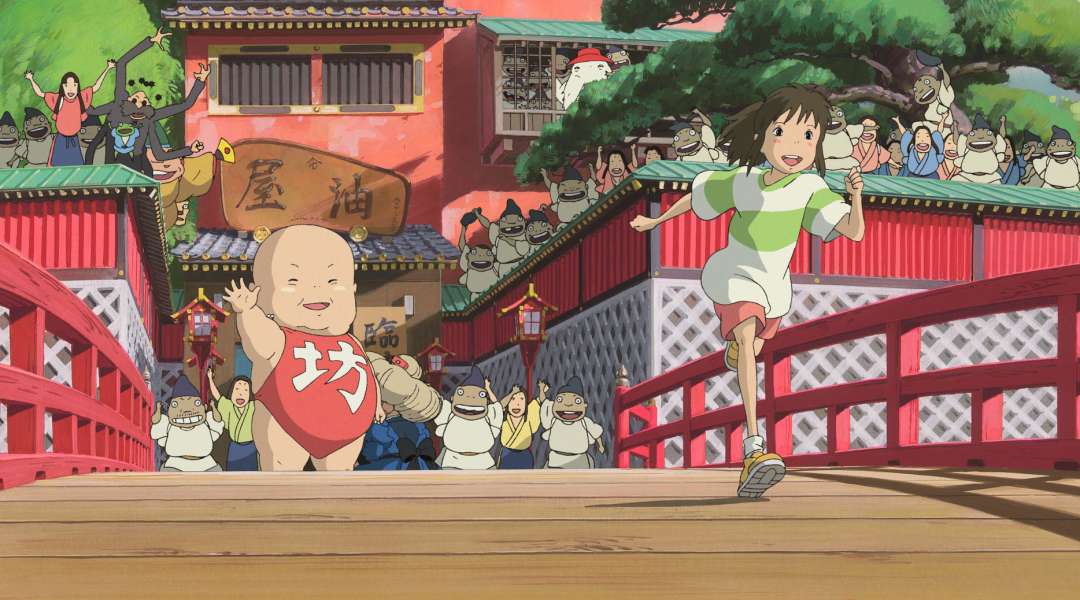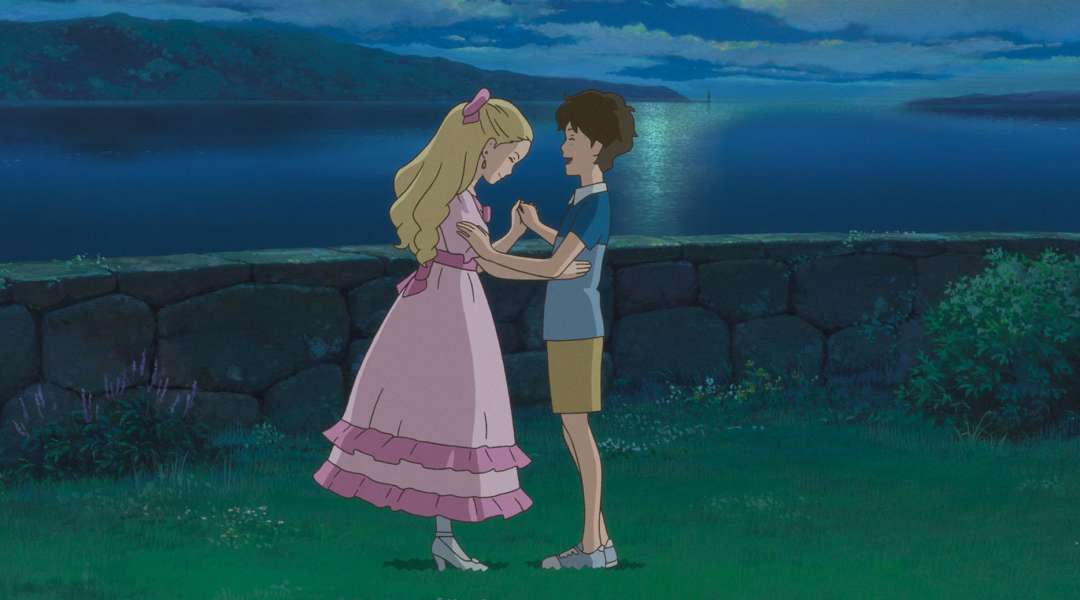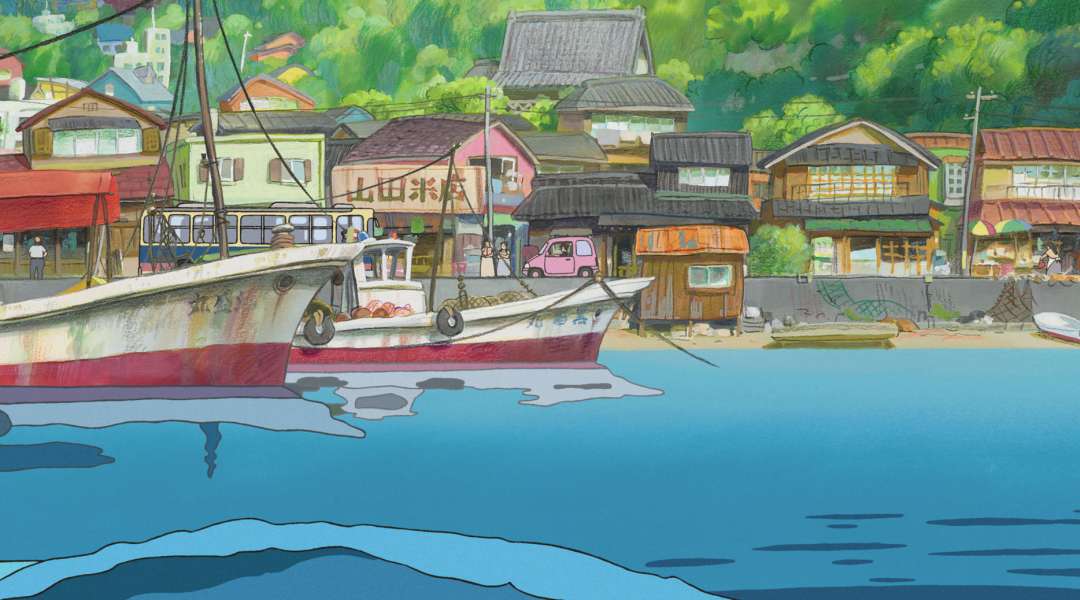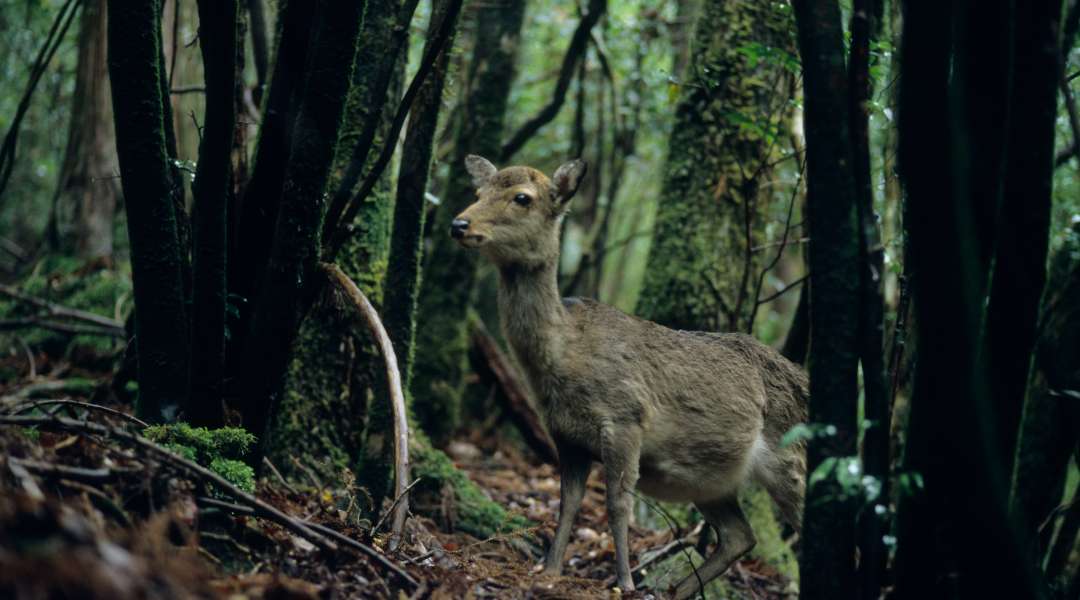
No other artform gets the imagination going quite like cinema, but, in the spirit of optimistically thinking beyond just the armchair when it comes to travel, we thought we would enlist the help of an old friend, the founder of Studio Ghibli and the Walt Disney of Japan, Mr Hayao Miyazaki. It’s no secret that the man himself is a big fan of Japan’s multitudinous landscapes - his love for its many natural worlds comes across strongly in the attention he pays to the mountains, forests and seas present across his work. But which films were inspired by which places? Well, buckle up and join us as we tour Japan from north to south - the Ghibli way!
Hokkaido / When Marnie Was There 思い出のマーニー

Hokkaido is the northernmost and least developed of Japan's four main islands. Its weather is nigh-on siberian in winter, while in summer it remains cool and fresh, escaping the humidity of other parts of Japan.
Its sweeping wild landscapes were the inspiration for When Marnie Was There, the tale of a magical friendship between a bored and lonely teen on her summer holidays in the country, and a mysterious girl from an enigmatic mansion near where she’s staying. All is not quite what it seems! The drama plays out with Hokkaido’s wide open lakes and distant mountains forever in the peripheries, not to mention the foggy lowlands of Kushiro, which make a special guest appearance.

Tohoku / Arietty 借りぐらしのアリエッティ

The Tohoku Region consists of six prefectures in the north of Japan's mainland, just below Hokkaido island and is well known for its remote villages, its hot springs, its local festivals, its folklore and its sacred traditions. Arietty, a piece of folklore in itself, gives us just a taste of how alive this rural region is with vibrant natural colours all year round, be it spring, summer, autumn or winter.
The house from Arietty is supposedly based on Seibien Garden in the floral pastures of Aomori, a prefecture famous for its juicy red apples. As is clear in Arietty, there is a fine blend of Japanese and Western architectural styles from the 1900s to be found in this quaint stately home in Hirakawa City, not far from the babbling brooks and leafy footpaths of the Oirase Gorge.

Kanto / From Up On Poppy Hill コクリコ坂から

The Kanto region is Japan's largest plain, and a highly densely populated region that we’re glad to confirm actually does exist in real life and not just in the Pokemon franchise! Japan’s two largest metropolises, Tokyo and Yokohama, are located here, giving the area a distinctly cosmopolitan buzz, as was deftly illustrated in From Up On Poppy Hill, the heartfelt story of a group of teens fighting to prevent their school buildings from being demolished. Set in 1960s Yokohama, with the first Tokyo Olympics looming into view, there is a lot of hope but also anxiety about what the modernisation of Japan will bring, but the retro urban landscapes of Yokohama’s downtown and residential areas ooze charm, much the same as the modern day preserved districts around Sankei-en gardens, Hasedera temple and the Noge nightlife district. If you’re in a rush, swing by the Ramen Museum to walk around a very detailed recreation of what life was like back then.

Chubu / The Wind Rises 風立ちぬ

The Chubu Region consists of nine prefectures and varies wildly from north to south but is broadly characterised by undulating mountainous vistas bursting with lush green vegetation, like those surrounding the Kamikochi Imperial Hotel in the north which features strongly in the wartime epic The Wind Rises (remember the pesky paper airplane?). The higher altitudes in the hills of places like Nagano, Niigata and Ishikawa mean that the humidity of Japanese summer often doesn’t reach them, making them the perfect place for the fancier Tokyoites to escape the heat! Historically, this meant these areas have a brilliantly fascinating mix of Western and Japanese styles, creating what many refer to as the ‘Japan Alps’, brimming with hiking trails, ski slopes and rural cycle routes. If Kamikochi feels too far for you, try out Karuizawa, famously the favourite summer spot for John Lennon and Yoko Ono.
Travel south of The Wind Rises’s celebrated hotel and you’ll find Nagoya city in the south - the site of the new Studio Ghibli theme park set to open in autumn of 2022.

Kinki / Princess Kaguya かぐや姫の物語

The Kinki Region, also commonly known as the Kansai region (perhaps because Kinki is too hilarious to use casually in everyday English conversation), is the ancient political and cultural homeland of Japan. In fact, it was the same kind of rugged beauty of the fields and architecture in Nara which inspired the exquisite scenery we see in the gorgeously illustrated Princess Kaguya. Though the tale may be bittersweet, it perfectly encapsulates the way of life and culture of the times, weaving local landscapes and snapshots of this historic region into a retelling of one of Japan’s most well-known fairy tales. To really get a sense of these bucolic lands that time forgot, try venturing a little off the beaten path into Kyoto’s rural north, or making a trip out to the tea town of Uji and the dazzling sights at Horyuji Temple.

Chugoku / Ponyo 崖の上のポニョ

The word ‘Chugoku’ is confusingly both the Japanese word for China and the large area between Kansai and Kyushu, where Hiroshima hides. The Chugoku region is commonly subdivided into the much more remote northern coast, with its abandoned mines and rolling sand dunes and then the southern coast, with its sophisticated cities and views across the Seto Inland Sea which became original inspiration for the bewitching Ponyo. More specifically, the story supposedly takes place in the remote fishing village of Tomonoura, a quaint getaway full of traditional seaside charm and cultural surprises that’s well worth adding onto a trip to the city of Hiroshima or the island-hopping cycle routes of Onomichi. Much like the bright and magical atmosphere of the film, Tomonoura and the fishing towns along the Seto Inland Sea are alive with the smell of fresh sea air, the taste of delicious seafood and the sound of the fishing boat masts clinking gently in the bay.

Shikoku / Spirited Away 千と千尋の神隠し

Shikoku, literally "four countries", is the mainland’s rustic island neighbour composed of four prefectures whose borders have rarely been altered through the ages. And that just about sums up Shikoku – a land unchanged by time, rich in unspoilt treasures – even while a taste for modern art and creativity continues to flourish in the art islands of its northern coast. Given its powerful parochial associations, it should come as no surprise that it is home to the setting of perhaps Studio Ghibli’s most famous work, Spirited Away. The film’s central setting of the bustling bathhouse is actually based on one of Japan’s most treasured hot springs at Dogo Onsen. Take a step inside its many winding corridors and you’ll soon understand why but it’s hard to not see the majestic enchantment of Spirited Away in the low-ceilinged tatami rest areas, the wooden coin lockers, the gentle glow of the reception desk, the yukata-clad bathers, and of course the variety luxuriously ornate hot spring baths themselves.

Kyushu & Okinawa / Princess Mononoke もののけ姫

Very poetically, then, we arrive at our final destination(s)! The island of Kyushu was Japan's gateway to the wider world in times gone by and as an early center of Japanese civilization, offers many historic treasures, unique cities and striking natural wonders, both volcanic and aquatic. Okinawa, in turn, is Japan's southernmost prefecture, consisting of a dozen-strong island chain, stretching over roughly one thousand kilometers encompassing mangrove orchards, beautiful beaches and a strong local Ryukyuan identity and local culture.
Together, these two regions make up Japan’s subtropical south, but zoom in between them on the map and you’ll find the unsuspecting island of Yakushima, the place where the lush verdant moss forests of Princess Mononoke came to life. Just as the woodlands around Iron Town conceal wondrous creatures and ancient beings beyond our comprehension, so does Yakushima boast a roster of mind-expanding nature, whether that’s in its towering 1000 year old ‘yakusugi’ cedars, or the wild monkeys, mountain deer and sea turtles that call the dense jungle of the island home. To take a trip into the land that made the film will mean factoring in some time, as it requires an overnight boat from Kagoshima, or an internal flight, but it’s sure to be the memory you treasure most from your trip upon your return home.

And that's of course not it - there are so many other beautiful Studio Ghibli films that have locations in Japan in real-life, but we hope we've been able to give you a little insight into how those beautiful films came about, and also the varied landscapes throughout Japan, from north to south.
For information on how to get around Japan and explore all these wonderful places, take a peek at our transport page.
Or, for a guide to all the film locations behind the 2022 summer blockbuster Bullet Train, read more here.
To stay up to date with all the latest happenings in Japan follow us on Facebook or Twitter.

















































